|
Nearing a greatIndian loss
Though officially called the Great Indian Bustard Bird Sanctuary, the grasslands of Nannaj in Maharashtra, are now witness to rapidly depleting numbers of this species. Thankfully, though, your quest for the elusive bird may also lead you to some other wildlife encounters.
I had, for quite some time, heard stories of this beautiful and majestic bird which shows up at Nannaj, near Sholapur, during certain periods in a year. To my dismay, the latest accounts were largely about the GIB population declining at a very rapid rate. The recent survey done this Aug-Sept revealed that out of 10 birds that were sighted last year, only three were seen this season. I immediately started getting in touch with people who could guide me in my quest for sighting the GIB. We arrived at Nannaj just in time for an evening session; the entrance to the sanctuary was through a village and the sign boards on the way proclaimed that the ‘Maldhok’ was indeed a resident of these grasslands.
The GIB is big in size and quite shy too; any movement or noise by humans, and it disappears quite magically into its habitat. The male is a majestic bird, which we spotted far off, moving around very slowly and from time to time fanning out its tail, raising its neck and slowly making a humming sound to attract the females. Our guard, Mr Bhagvat, confirmed that according to the survey, this year only one male and two females were spotted. Sadly, over the next two days, we only managed to spot the male.
Luckily, there was more in store for us. Nannaj sanctaury is a vast area divided into several parts with wide expanses of grassland area along with small bush plants, forming a perfect place to house the GIB along with other mammals and birds. During our stay, we were especially lucky to have spotted a fox, Blackbuck male and female with their small herd, Pallid Harrier, Grey Francolin, Southern Grey Shrike, Rain Quails, along with common sightings of the Large Grey Babbler, Common Hoopoe, Indian Silverbill, Ashy Prinia, Laughing Dove and several lapwings. The sanctuary is merely protected by huge piles of stones, and separated from the roadside by a small water drain. Mr. Bhagvat visits the place daily and stays till the evenings to check on the movements of the GIB and ensure that the people who visit the sanctuary are in their limits. He has tremendous knowledge about the area and is very helpful as a guide. There are a couple of huts in Nannaj, made available at different locations where one can study and photograph the movement of the GIB and other animals without disturbing them. Another nice touch was the presence of several hand pumps and, along with it, quite a large waterhole for the animals to survive the harsh summers.
Nannaj village itself does not have any resorts or rooms apart from the ones provided by Forest Department, which are few in number. What I also learnt during my conversation with a few locals was that Nannaj once produced huge amounts of high-quality grapes, which were a major source of livelihood for the people. Recently, however, as GIB conservation picked up more seriously, a lot of farms were closed and moved away. This is the root of the conflict between the survival of the GIB and the local villagers; there have been constant clashes between the people and the Forest Dept on this issue. I did hear that the government is providing them with compensation, but for various reasons, the problems continue. It is believed that last year, one GIB was poached for this very same reason; and there are quite a few people who do not want the GIB in their village as it is affecting their lives. The issue is serious as it threatens the very survival of the bird, given the already existing pressures and low numbers associated with the species. If we would like even the slimmest chance of sighting the GIB next year, or at least seeing its population increase, there has to be some consortium made immediately. Several officers and volunteers are working constantly towards saving the GIB at Nannaj; and many do believe that it is possible for both sides to survive with the right sort of intervention. My sincerest hope is that this majestic bird continues to prosper on the grasslands of Nannaj along with the people who live there. |
||||||||||||
|
Last resort
With perhaps less than 300 individuals left in the wild, time is running out for the magnificent GIB. Here's an update.
Rajasthan has the largest population of Great Indian Bustards (Ardeotis nigriceps) in the world; our major hope of bringing the bustards back to glory relies on this desert state. But are these birds safe enough? Scientists believe that bustards from Rajasthan may be moving to Pakistan for at least some period of the year, and both countries might be sharing a common population. We need to have satellite telemetry studies to come to any conclusion. Hunting is a severe threat in Pakistan, and 49 bustards are reported to have been hunted in the last four years. It is further expected that the Indira
Following the rules
|
||||||||||||
|
THE POT-NOSED CROCODILE
The Gharial (Gavialis gangeticus) is one of the three crocodilian species found in India, characterised by a long, thin snout and a pot- or bulb-like structure at the end of its snout. In fact, its very name,‘gharial’ comes from the local Hindi word, Ghara, meaning pot. This ghara turns the hissing sound a crocodile makes into a buzzing sound, and acts as an amplifier. It also helps the females to identify mature males; Gharials are the only known crocodilian species that show sexual dimorphism.The snout is specialised for feeding on fish and the jaws have interlocking teeth that help in capturing the fish and holding on to it.
Gharials are important for the riverian ecosystem. They are the only living members of the Galvialidae family and one of the keystone species in the riverian ecosystem. Gharials are faceing major threat from habitat destruction because of agriculture, sand mining, dams and irrigation projects, pollution and siltation. Fishing is another major threat causing gharials to get stuck in the nylone nets and they drown in water and die. Though inrecent times, gharial conservation activities havebeen initiated in India and Nepal with the help of local and government bodies. Protected areas have been established and restocking of these animals through captive breeding programmes is underway.
|
||||||||||||

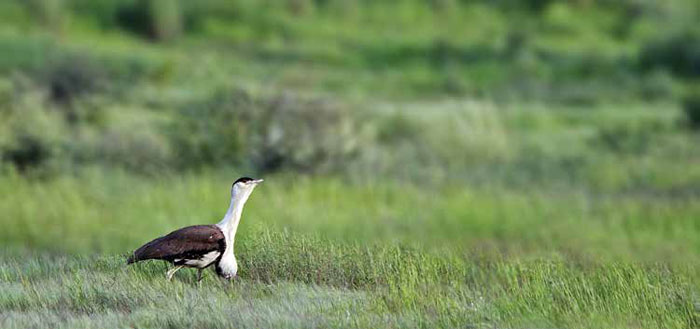
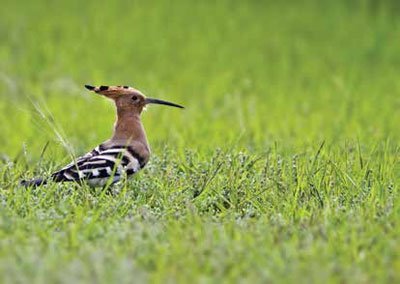
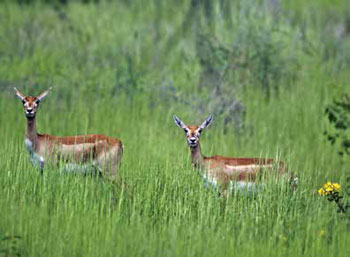
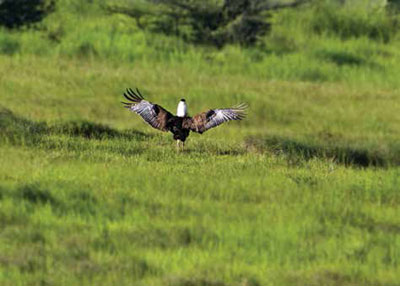
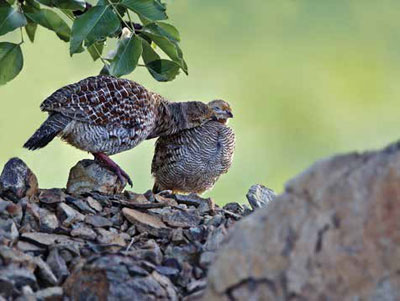
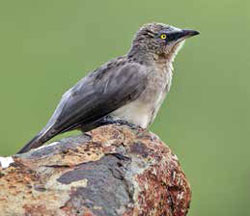
.jpg)
.jpg)
.jpg)